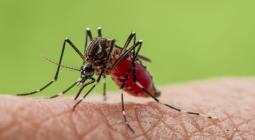Deadly humid heatwaves to spread rapidly as climate warms – study

Small rise in global temperatures would affect hundreds of millions of people and could cause a sharp rise in deaths
Life-threatening periods of high heat and humidity will spread rapidly across the world with only a small increase in global temperatures, a study has found, which could cause a sharp acceleration in the number of deaths resulting from the climate crisis.
The extremes, which can be fatal to healthy people within six hours, could affect hundreds of millions of people unused to such conditions. As a result, heat deaths could rise quickly unless serious efforts to prepare populations were undertaken urgently, the researcher said.
Normally, the human body cools itself by producing sweat, which evaporates and takes heat away. But when humidity is high, evaporation is reduced. The study used a limit based on experiments on people showing that when combined heat and humidity, as measured by so-called wet bulb temperature, passes 31.5C, the body is no longer able to cool itself.
The researchers called this threshold “non-compensable heat stress”, as sweating cannot compensate for the extreme conditions. Without cooling aids, such as cold water, fans or air conditioning, death is likely within hours.
The research analysed data from thousands of weather stations across the world to show that 4% had already experienced at least one six-hour period of this extreme heat stress since 1970, with the frequency of such events doubling by 2020. However, these have been confined to date to hot places, including the Gulf in the Middle East, the Red Sea and the North Indian Plain, where people expect extreme heat.
The analysis, which also used climate models, shows that extreme heat stress will spread rapidly to other regions with global heating of only 2C. The climate crisis has already raised global temperatures by about 1.2C. At 2C, more than 25% of the weather stations would suffer the extreme heat stress once a decade on average.
The east coast and midwest regions of the US and central Europe, including Germany, are among places that would experience the arrival of unprecedented heat stress conditions. In places that are already hot, like Arizona, Texas and parts of California, periods of extreme heat stress would become annual events at 2C.
The researcher said that the absence of mass deaths in places already exposed to the extreme heat stress showed cooling measures could be effective in preventing deaths. But they said the rapid arrival of these conditions in places where people had not historically had the need for cool buildings or air conditioning, and were therefore unprepared, was worrying.
“Of all of the different manifestations of climate change, heat is the one that I personally worry the most about and these results have made me more concerned,” said Carter Powis, at the University of Oxford, UK, who led the study with colleagues at the Woodwell Climate Research Center in the US.
“Everything is OK until it’s not and there are limits to what the human body can tolerate when it comes to heat,” he said. “Things will keep on chugging along hunky dory until we pass those limits and then very abruptly, they will not be OK. Suddenly, you’ll see an acceleration in mortality.
“What I worry about is that our bodies and our society will prove more fragile to small changes than we think,” Powis said. “This is just another [study] saying we need to start reducing emissions – but that’s what we need to do.”
Dr Colin Raymond, at the University of California, Los Angeles, who was not part of the study team, said: “Many areas are only slightly below the non-compensable heat level now, so as the planet continues to warm, the total increase in exposure will be exponential.
“We know the broad contours of what’s ahead, but not every last wiggle,” he said. “But the seriousness of the extreme-heat hazard means it is incredibly important to not be caught unprepared, and to treat heatwaves near or above the non-compensable limit like other life-threatening disasters. For the most severe events likely in the coming decades, lives will depend on the availability of artificial cooling.”
Previous research on extreme heat and humidity used the maximum theoretical limit of the human body, a wet bulb temperature of 35C, at which even cooling aids cannot take heat from the body. These studies have shown the high vulnerability of people in the Gulf, India and China to extreme temperature and humidity conditions. Around the world, scientists have estimated that the climate crisis has already caused millions of premature deaths in the last three decades.
The study, published in the journal Science Advances, used the detailed data from weather stations and the broader data produced by climate modelling and found “very good agreement”, said Powis, giving confidence in the results.
The researchers concluded: “The geographic range and frequency of non-compensable heat extremes will increase rapidly, given only moderate continued increase in global average temperatures. This implies that, in the near future, a substantial portion of the world’s population will be exposed to these non-compensable environmental conditions.”
They said there was “a real risk” of widespread exposure with “hundreds of millions of people” affected before they were sufficiently heat-adapted to avoid attendant increases in deaths and illness. The scientists were unable to assess Europe and Japan using climate models in this study due to known difficulties in representing high levels of heat in Europe and humidity in Japan.
Powis said that even if adaptation measures to protect health were put in place, extreme heat stress would still prevent many people from working or going outside.
“Even in cases where it’s not lethal, the impacts on quality of life are going to be dramatic.”
Photograph: Frederic J Brown/AFP/Getty Images - A traffic warden works in the hot sun in Las Vegas. Periods of extreme heat stress would become annual events at 2C in US states such as Arizona, Texas and California.






